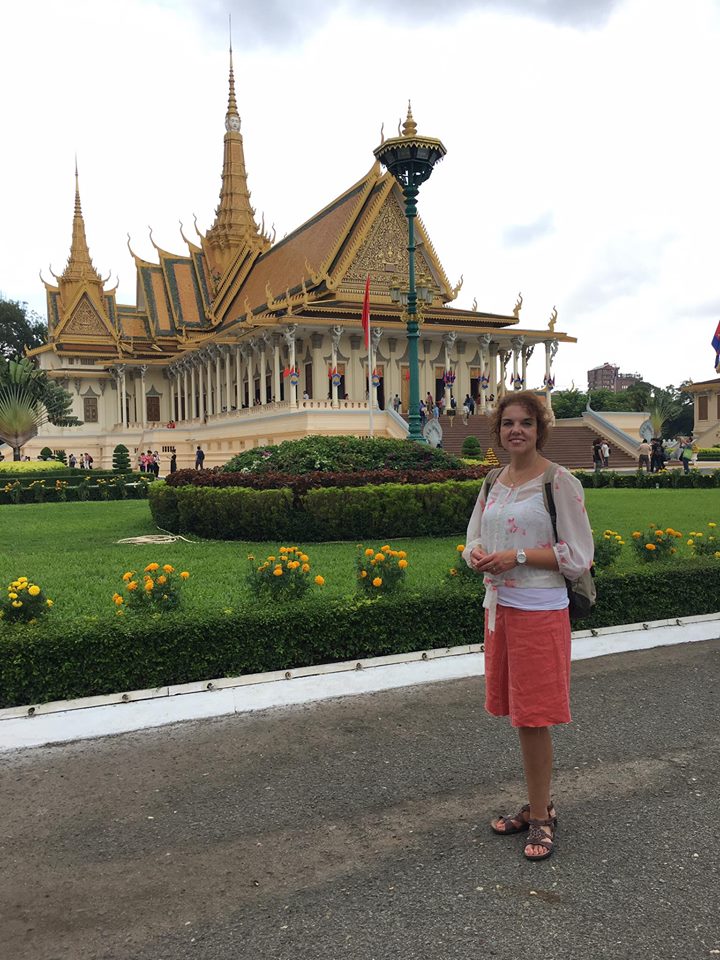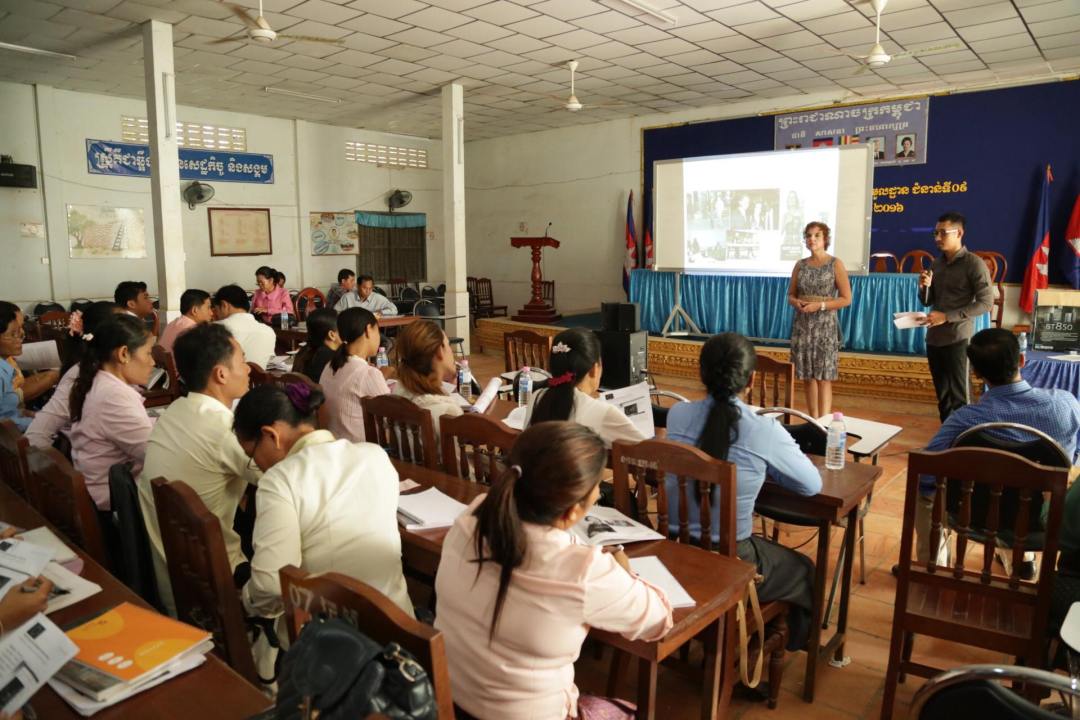“When survivors ask you to tell their stories to students, to pass on their lessons, you feel a sense of responsibility to do so. It takes on a personal meaning that goes beyond the classroom.”
-Sandy Renken
“Passionate, humble, and dedicated. She is a gifted educator who is making a real impact on both her students and her community,” are the words Kristin Thompson chose to use when describing Sandy Renken, MTF Class of 2006. Sandy’s teaching career began in 1994 at Freeman Public Schools, in the small town of Adams, Nebraska (population 400) and she is still at Freeman to this day. Her teaching schedule consists of American History and a semester-long Holocaust class, which she developed; she is also the technology coordinator for the entire school district. Sandy’s interest for the Holocaust began when she had a six-week WWII course in high school, which was rare for the 1980s. It wasn’t until 2001 that she delved into the world of Holocaust education more deeply and saw a flier about the Belfer Conference hosted at the USHMM. She ended up attending Belfer I in 2002, which was also her first time in Washington D.C. and she had a truly eye-opening and wonderful experience. Upon completing Belfer I, an idea was brewing to start a semester-long Holocaust course at her school but she knew she needed new ideas, trainings, and materials. Sandy stated, “What better place to gather resources than at the Museum?” She then went to Belfer II in 2004 and remembers the MTFs who presented to her at the conference and thought, “I want to do this.” Sandy admired the presenters and knew she could rely on them for advice and guidance. In 2006 Sandy was selected as a Museum Teacher Fellow and her life as an educator was forever changed.
Upon being selected as an MTF, Sandy was one of the founding members of the Nebraska Holocaust Education Consortium (http://www.ihene.org/). This consortium was started in 2006 and helps organize annual conferences for pre-service and in-service teachers in Nebraska. Sandy continues to be active in the consortium and also with the USHMM. In the summer of 2016 Sandy went to the MTF 20th Anniversary Event and saw this as an opportunity to gain more knowledge from the Museum. She was excited to hear about the up and coming exhibit, Americans and the Holocaust. Sandy realizes the Museum changes and evolves through the years and to see things from the staff and be kept up-to-date with new Museum initiatives was a real treat.
Back in her classroom in Nebraska, Sandy wants her students to know that at the end of the day, “It’s all about how they treat people. Just be a decent person. If nothing else, it makes them think: is this respectful, is this appropriate?” The culture of her classroom changes from the beginning of the school year to the end. “Students who wouldn’t normally associate with one another, are all of a sudden talking and working together.” She learned the focus of each lesson should be centered on student outcomes. Sandy carries this experience with her today in her lessons–always keep the focus on the students. Every November Sandy takes a group of students who are enrolled in her Holocaust class to the Museum in Washington, D.C. Through her interest in the Holocaust, she has been fortunate to meet numerous survivors and has been able to bring them to her community to speak. She even met a survivor of the Armenian genocide at her local small-town nursing home. Sandy was shocked to learn there was a survivor of the Armenian genocide in Adams, Nebraska! She built a strong bond with this man and she will never forget him or his message to Sandy–impart my story onto your students. Sandy mentioned, “When survivors ask you to tell their stories to students, to pass on their lessons, you feel a sense of responsibility to do so. It takes on a personal meaning that goes beyond the classroom.”








